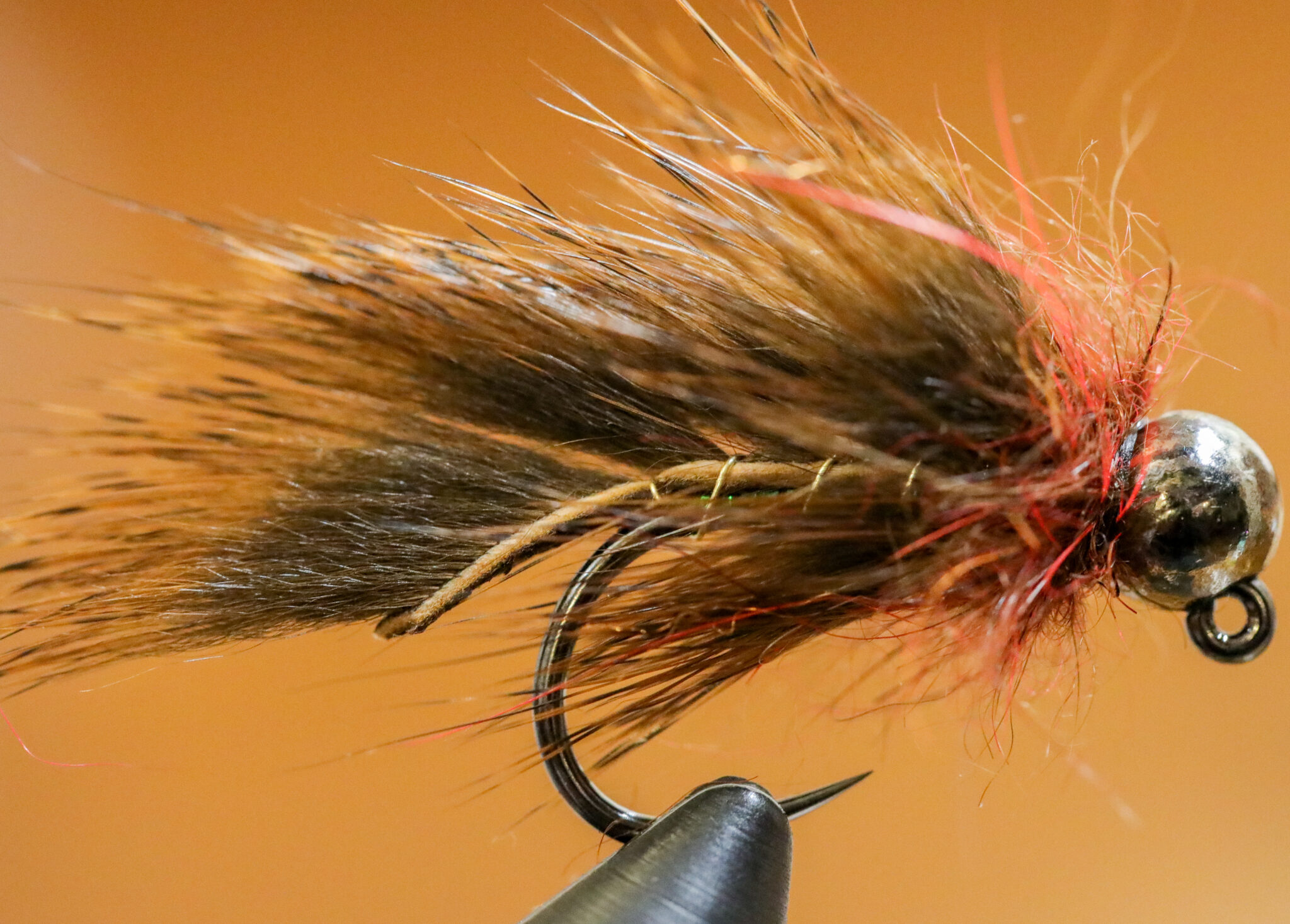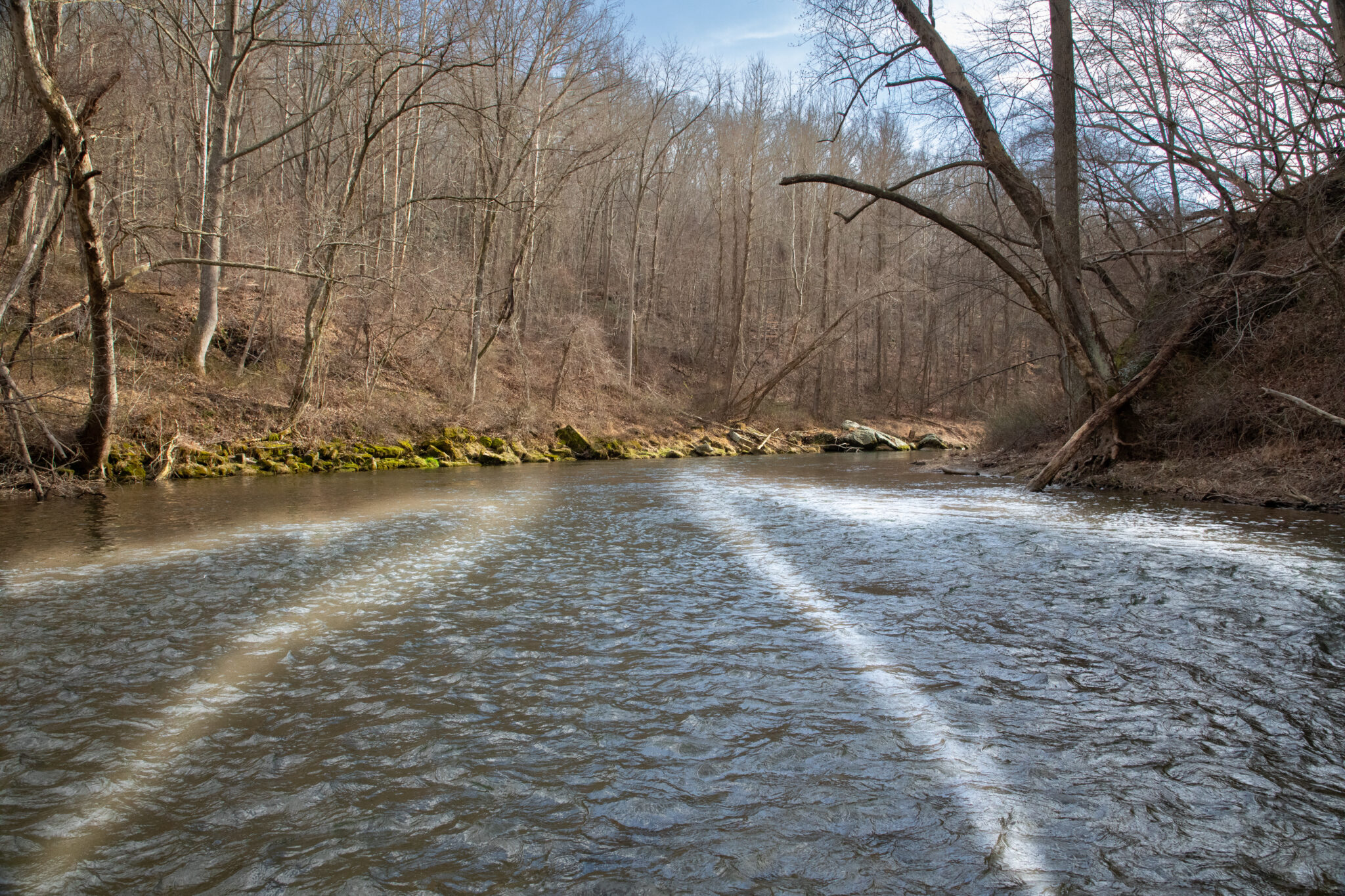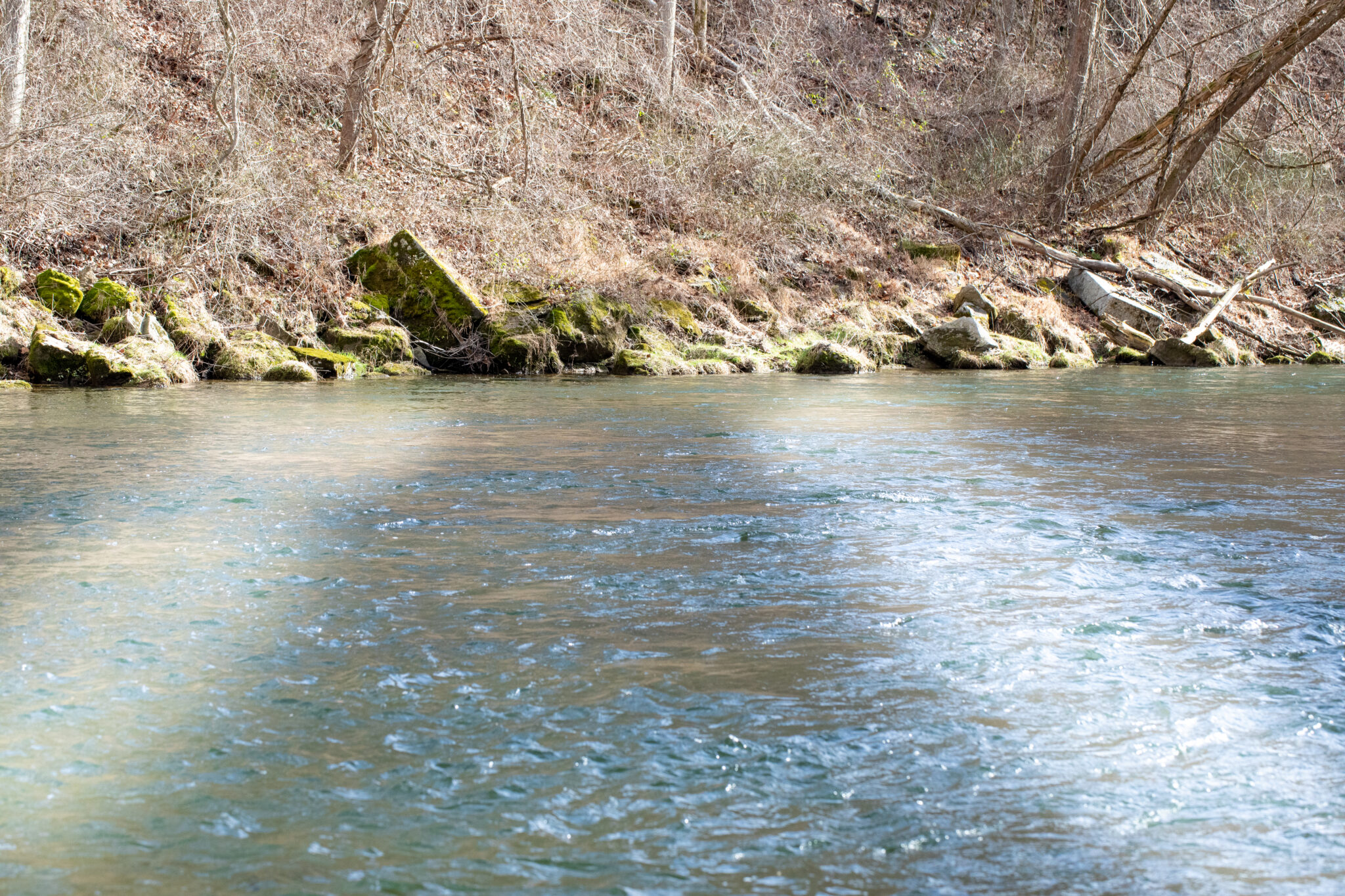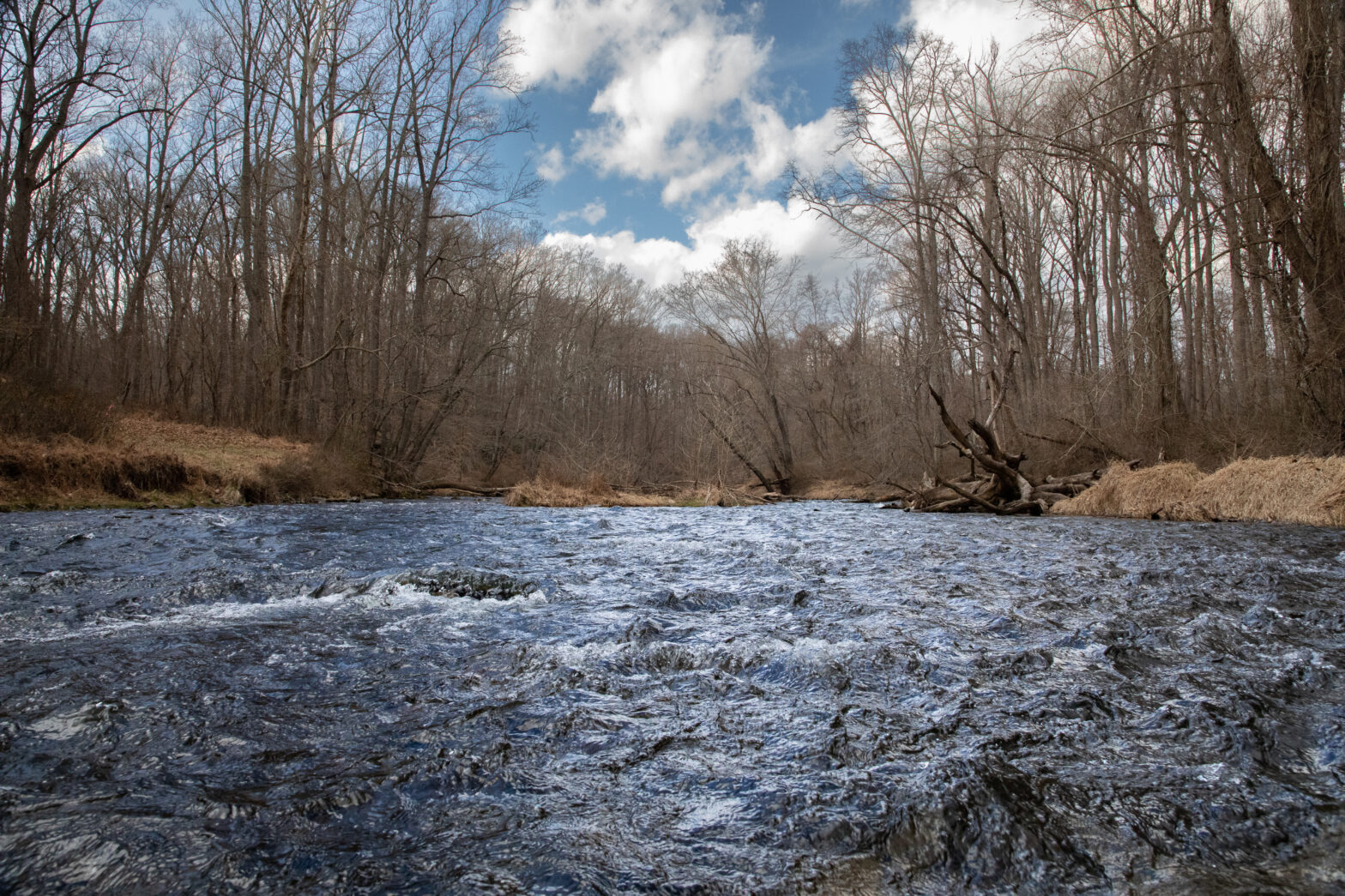
I get stoked when new techniques seem to prove themselves. What I call the Upstream Bounce has done just that for me. Maybe it will help you too. But there is always a catch. It is best utilized in specific water types/ conditions and in a small window of time. So let’s setup the when part of this first, then to the how.
Here on my home waters in North Central Maryland, late-winter weather is capricious. Not early spring, i’m talking about late winter. Sometimes we receive periods of warm weather that last for days and sometimes during those warmups we get rain. Recently it’s been thunderstorm type fronts that move through. Perfecto, because that’s the kind of rain we want, a quick passing shower of not too great intensity followed by a proportional rise of water and a ruffle of wind. Whether the sun follows the storm as well, or it’s obscured by clouds (yup, Floyd) it has made no difference in my getting in to feeding fish. So we are looking for: rapid but not in excess increase in water volume, corresponding increase in water temp, some conditions of wind seem to really help.
I like fast water. Even in the Winter I find myself gravitating to it, finding myself moving closer as I fish through the day. I always end up there. Fine fine, i’m cool with that. Past few years my best winter fish have come from this fast water and the pockets of slower currents within that fish move into when conditions are right for a meal. Bowls, buckets, deep current differentials, allot de resistance, whatever you want to call it… structure or substrate on the river bottom creates slow water for fish to occupy without expending too much energy. These are also the places we want our streamers to swim… and look like something that is alive when doing so.
So here is the how:
I use a 9 foot in a 6 weight with sinking line. Currently I use the Sonar by Scientific Angler. 25’ of sinking line that is 200 grains. After the 25’ it’s floating. Nine foot 2x mono leader, I snip 3 feet off the tippet section, making sure that the waste I just cut off makes it in my fishing pack or a pocket and not in the stream, and then I tie my streamer right to it. Davy knot, as per usual. Use something heavy like what I just described, whatever it is. (What I like comes out being about .023 to .011 or .012, but its the resulting taper I like, in case you were wondering.)
We need to get down deep if we have to, but mostly we want to stay in the depth when we get there. We need a sinker of a line with a heavy-ass streamer. 4.3mm (3/16”) tungsten bead with usually a jig style hook. Streamer pattern style and color I choose varies on many factors, but as I write this it has been what is pictured above
.
Now I know some may be thinking: why not go to your mono- rig streamer setup so you can achieve the same results without all that mass of a fly line etc?? Well, getting down and staying down is nice but it’s that mass of that sinking fly line that is the key component to this technique…. The bounce. Plus, when using heavy streamers in fast water, and I consider 4.3mm on a no. 8 hook to be heavy, I like a traditional cast with a traditional style fly line. Why? Well that’s a whole different blog post…. Which probably would start something like this: I’ve gotten really good somehow at damaging rods with big tungsten beads. Ok back to it.
The bounce. It’s not just a bounce, but it’s the way the bounce feels. Let me explain a bit…
The goal is to start the presentation something like a traditional wet fly or streamer swing. Facing downstream, cast across or down and across and let the current take the streamer. Sometimes directly casting across the fast water to slow water and the insuring fast downstream swing of the streamer will cause a strike by those slow water fish looking at the current from the slacks. But this is a bonus, the real presentations starts when you’re facing your rod tip completely downstream and your fly is also downstream of you directly while being very close or if not on the bottom. It will take you a few casts at first to understand the depth and speed of the current and naturally how it will affect the upstream swim of your fly. The upstream swim… the bounce.

Have you ever seen how a sculpin swims? On the very bottom, darting and skirting from hiding place to hiding place… to slow water cover behind rocks and structure, on to the next same type of hiding place. Sculpins forage for food just like Trout, have home ranges and preferred routes of travel and security. Habits and patterns. We want our streamer to swim upstream like the sculpin. This technique has proven productive for me, I think, because it is able to emulate just that: this scurrying and sometimes frantic movements of this small baitfish. So with that in mind, the bounce is not a bounce like a basketball bounce… its a method for for movement that gets us close to the real movement of a baitfish or sculpin. We are not violently bouncing anything. It’s a subtlety turned up just enough to call and feel like a bounce. The bounce felt in your fly line and rod when working the streamer back up to you.
You’re going to get snagged, it will happen, and using a barbless hook will greatly reduce the probabilities. The bounce will too, bounce along upstream by putting action in your rod tip and utilizing the hand-twist method of line retrieval. In the attached photo i’ve high-lighted the areas of the current the fish will most likely be willing to take your fly. Remember, this is based on my experiences and within my rivers/ streams/ runs that I frequent.
Work your way up stream with varying retrieval speeds. Nothing crazy fast, remember we are still in cold water. Low to mid 40’s so everything will be inherently slower. Some of my most memorable displays of this technique come when finding adjoining currents. I like to stand in the middle of them, right above the confluence and cast to either side of the stream and work my streamer back up to me.. as I move downstream as far as I’m able to until my fishwater runs out. And if you’re in bigger water, don’t be afraid to let them casts go off far. Let the river have it at first on the swing and then retrieve. Repeat.
Change lanes. When working the water, change your angles of retrieval as well. Sometimes your may want to swim your streamer across your body to your weak side (if you have one) or across and up current in the direction of the bank.
We have had a warm winter this year so far, so maybe that is why this presentation has been more effective and apparent. The thresholds that turn the fish on during these seasonal times are reached and activated I suppose. I still think it’s too warm these days… but at least its offset by catching some more fish at times when it’s usually hard going.
Sean Eagan
Degenerate Angler
February 2023

